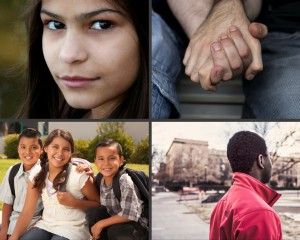Girls and Opioids: Vulnerabilities & Opportunities
By Reclaiming Futures, September 06 2017
In two separate blog posts in 2016, we discussed opioid use rates and substance use issues among adolescent girls involved with juvenile justice. In July 2017, the United States Department of Health and Human Services, Office on Women’s Health (OWH) released a report on opioid use, misuse, and overdose in women. The report provides information on the gender-specific issues and gaps in knowledge regarding females with substance use concerns/disorders. The report discusses the differences among females and males regarding the progression of substance use, the biological, social, and cultural issues (e.g., pain; relationships; family/parenting; trauma, determinants of health), effective treatments and barriers to implementation, and areas for further research. As it relates to adolescent girls (ages 12-17 years old), the report indicates they are more likely to use and become dependent on non-medical uses of prescription drugs as compared to adolescent boys. Access to prescription drugs can come from a home medicine cabinet and may help relieve mental health or physical pain symptoms and/or be part of their peer culture.




 As anyone who knows about the juvenile justice system will tell you, girls who are in the system are there because of a history of abuse. But why girls are there and the unique needs faced by girls of color is something largely ignored, even by those working in the justice system. For example, we know that girls’ brains develop earlier than boys do; we also know that so do their bodies. Unique factors such as these are precisely why I recently wrote and presented, “
As anyone who knows about the juvenile justice system will tell you, girls who are in the system are there because of a history of abuse. But why girls are there and the unique needs faced by girls of color is something largely ignored, even by those working in the justice system. For example, we know that girls’ brains develop earlier than boys do; we also know that so do their bodies. Unique factors such as these are precisely why I recently wrote and presented, “ While the number of boys in the juvenile justice system has dropped over the past decade, the number of girls in the system has actually increased. But that doesn't mean we have more violent girls nowadays. Over half the girls in the juvenile justice system are
While the number of boys in the juvenile justice system has dropped over the past decade, the number of girls in the system has actually increased. But that doesn't mean we have more violent girls nowadays. Over half the girls in the juvenile justice system are  In a new report examining the juvenile justice system’s treatment of girls,
In a new report examining the juvenile justice system’s treatment of girls,  A report released this month takes an in-depth look at how girls are represented in North Carolina's juvenile justice system, how the numbers have shifted over the years and why females are the fastest growing segment of the juvenile justice system despite the overall decrease in juvenile crime.
A report released this month takes an in-depth look at how girls are represented in North Carolina's juvenile justice system, how the numbers have shifted over the years and why females are the fastest growing segment of the juvenile justice system despite the overall decrease in juvenile crime.  In partnership with several juvenile justice advocates around the country,
In partnership with several juvenile justice advocates around the country,  About 80 percent of girls accused of misdemeanors in Maryland were committed to residential treatment centers compared to 50 percent of boys, according to statistics from Maryland’s Department of Juvenile Services (DJS).
About 80 percent of girls accused of misdemeanors in Maryland were committed to residential treatment centers compared to 50 percent of boys, according to statistics from Maryland’s Department of Juvenile Services (DJS).
 It was like a giant switchboard, the kind you see in 30s and 40s movies, a bevy of operators plugging in a crisscross of wires, taking calls, making connections, a cacophony of chatter.
It was like a giant switchboard, the kind you see in 30s and 40s movies, a bevy of operators plugging in a crisscross of wires, taking calls, making connections, a cacophony of chatter. On TV: "Young Kids, Hard Time"
On TV: "Young Kids, Hard Time" Juvenile Justice System News (Mostly)
Juvenile Justice System News (Mostly)